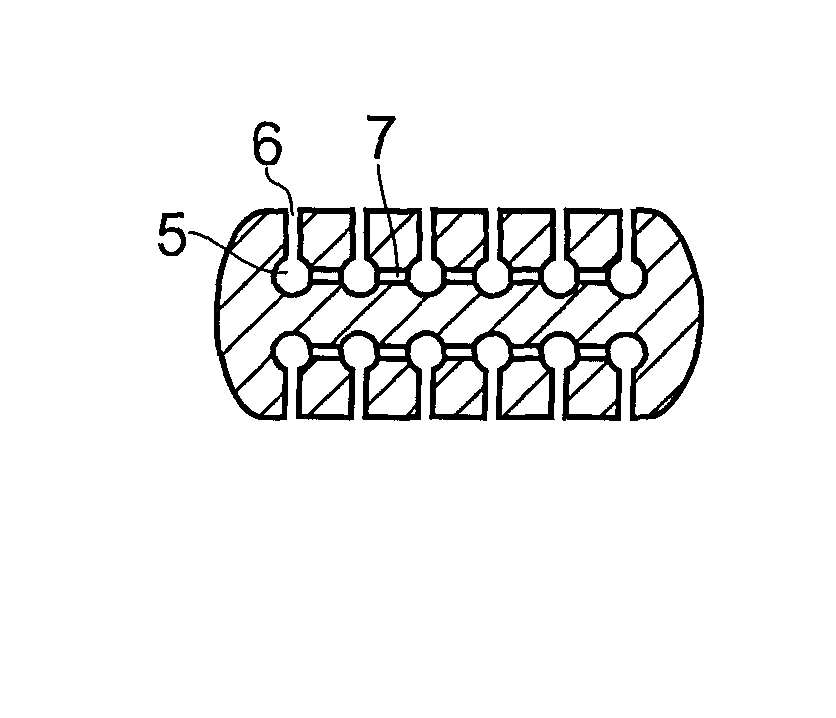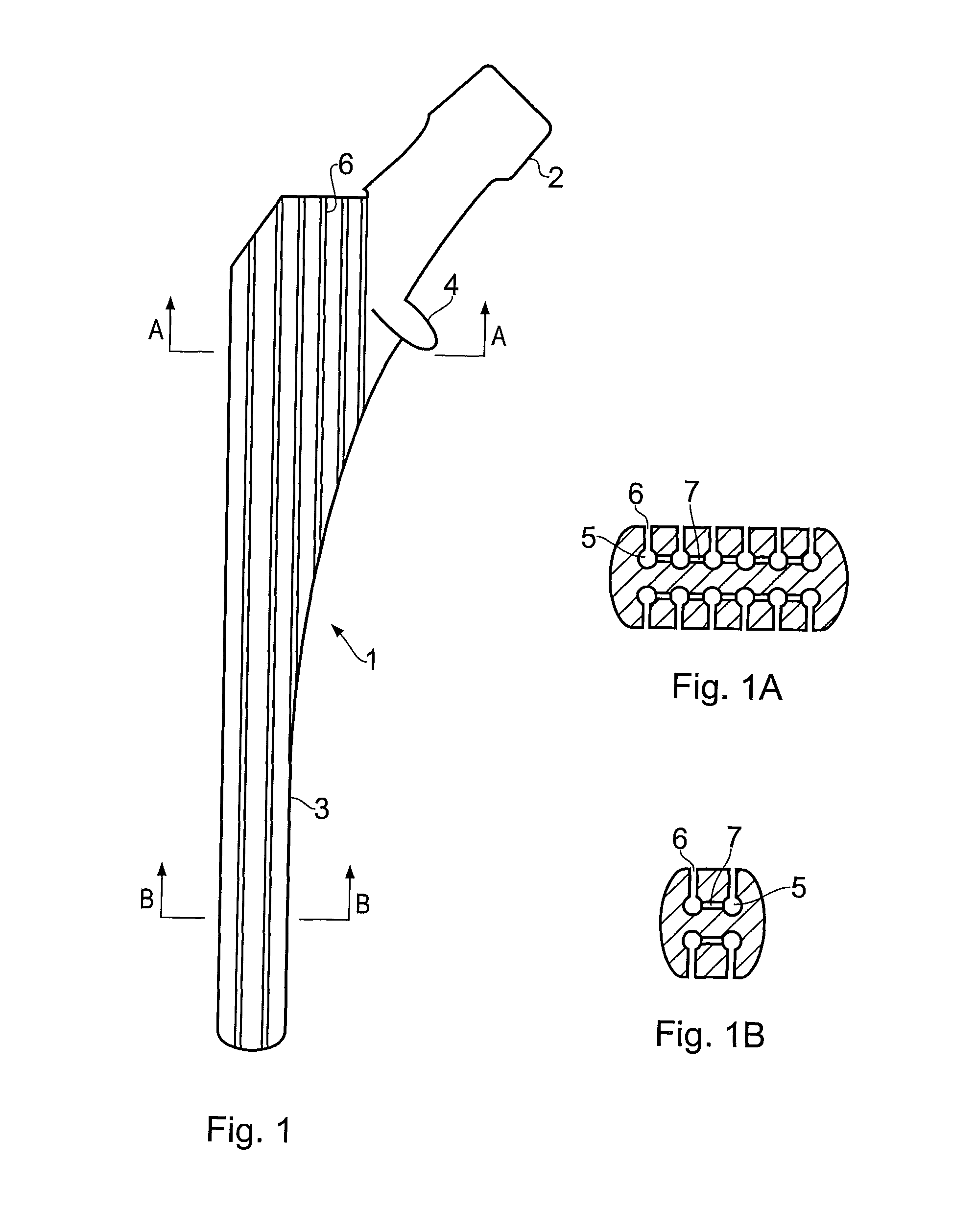Prosthetic element
a technology of prosthetic elements and elements, applied in the field of prosthetic elements, can solve the problems of undesirable bone remodeling, inability to hinder micro-motion at the element/tissue interface, and indented or raised portions
- Summary
- Abstract
- Description
- Claims
- Application Information
AI Technical Summary
Benefits of technology
Problems solved by technology
Method used
Image
Examples
Embodiment Construction
[0049]Although this description focuses on the application of the invention to a proximal femoral prosthesis, the invention is equally applicable to other types of cementless or cemented prosthesis. That is, the cutting guide means may be applied to other types of devices having different geometries.
[0050]According to one aspect of the invention as seen in FIG. 1, the prosthesis comprises an elongated stem having a smooth outer surface, a portion of which defines, when the element is implanted in a subject, a contact interface between the stem and surrounding bone and / or fibrous tissue. The prosthesis has one or more longitudinal guide channels located to the interior of the outer surface of the stem, and each of said channel or channels have an at least semi-circular wall portion. The radius of curvature of the at least semi-circular wall portion is adapted for receiving and laterally retaining a drill bit. According to one aspect of the invention the guide channels are longitudina...
PUM
| Property | Measurement | Unit |
|---|---|---|
| diameter | aaaaa | aaaaa |
| diameter | aaaaa | aaaaa |
| length | aaaaa | aaaaa |
Abstract
Description
Claims
Application Information
 Login to View More
Login to View More - R&D
- Intellectual Property
- Life Sciences
- Materials
- Tech Scout
- Unparalleled Data Quality
- Higher Quality Content
- 60% Fewer Hallucinations
Browse by: Latest US Patents, China's latest patents, Technical Efficacy Thesaurus, Application Domain, Technology Topic, Popular Technical Reports.
© 2025 PatSnap. All rights reserved.Legal|Privacy policy|Modern Slavery Act Transparency Statement|Sitemap|About US| Contact US: help@patsnap.com



